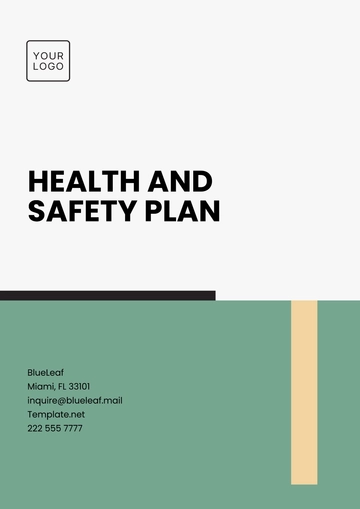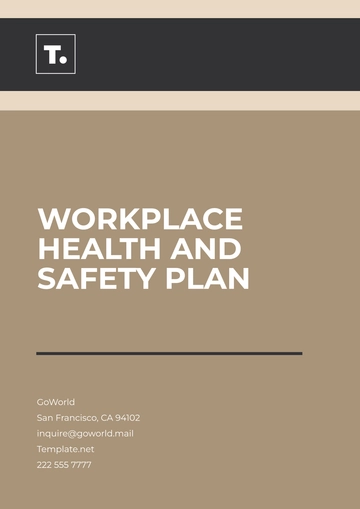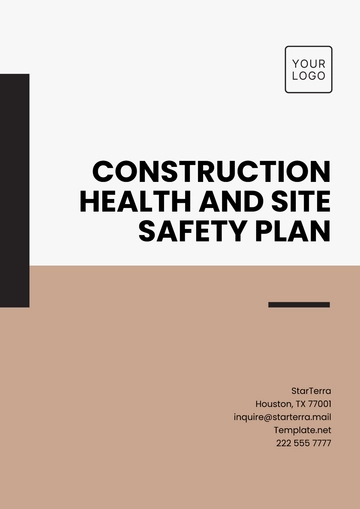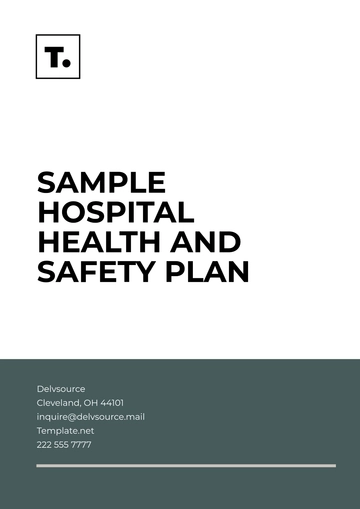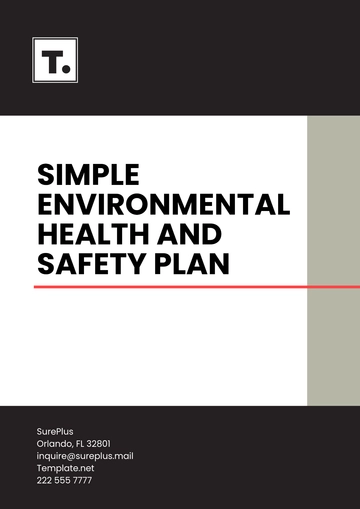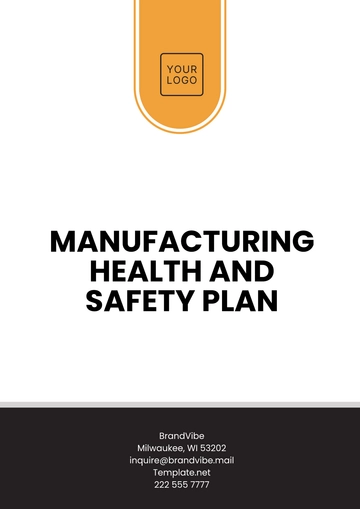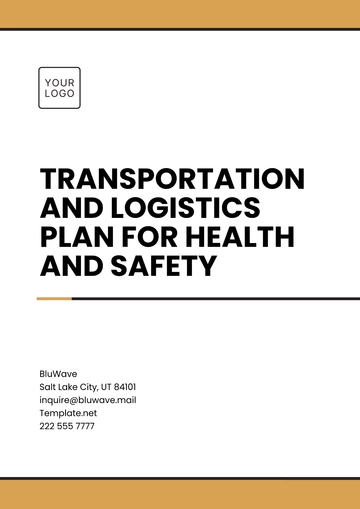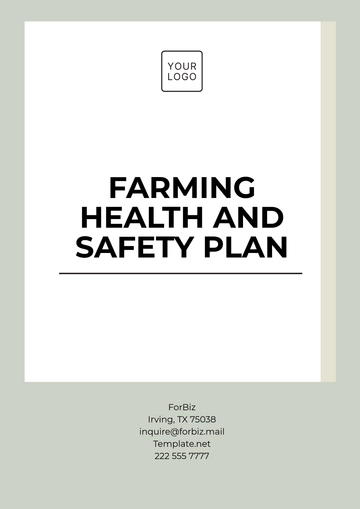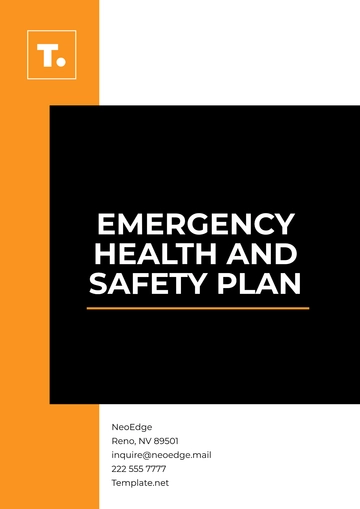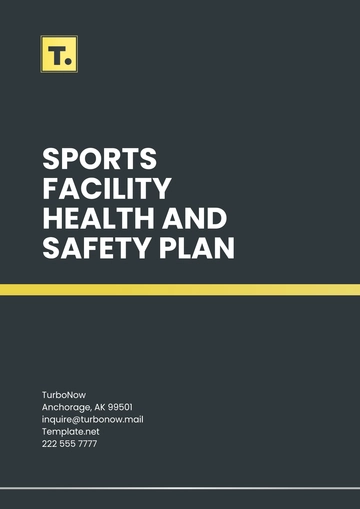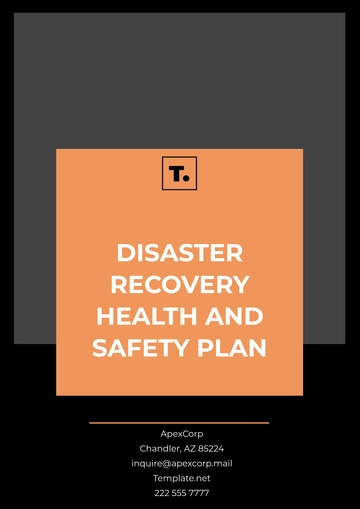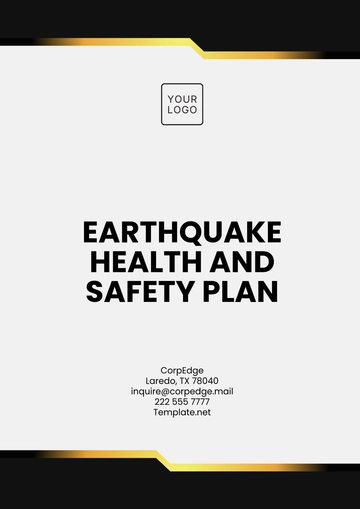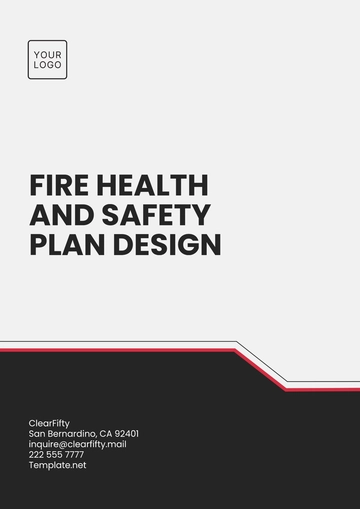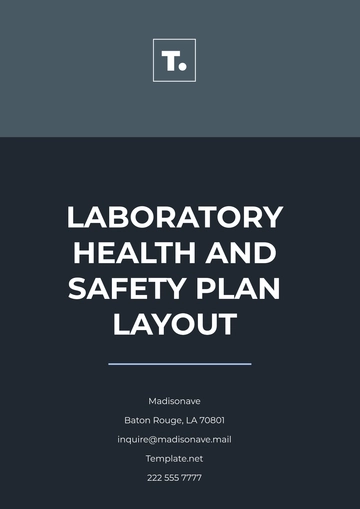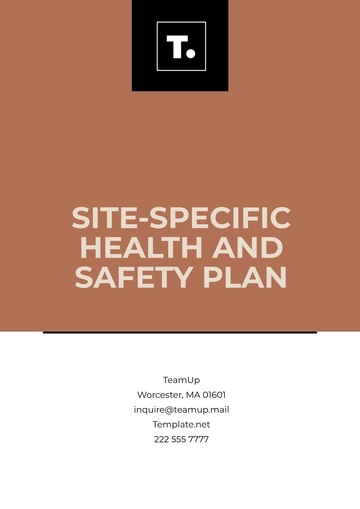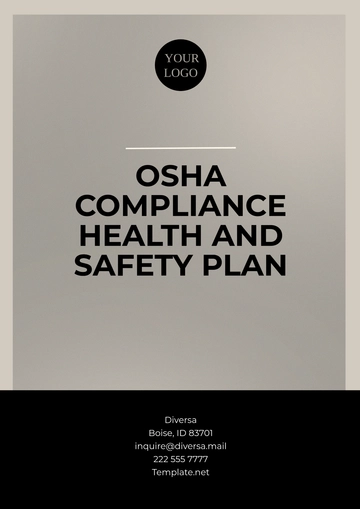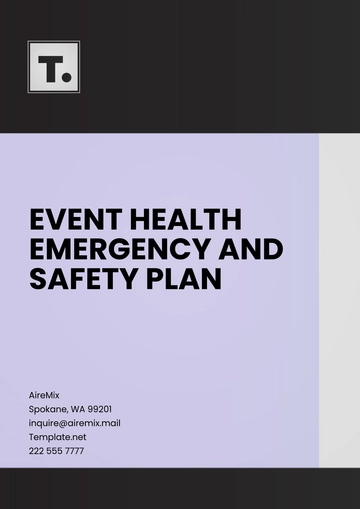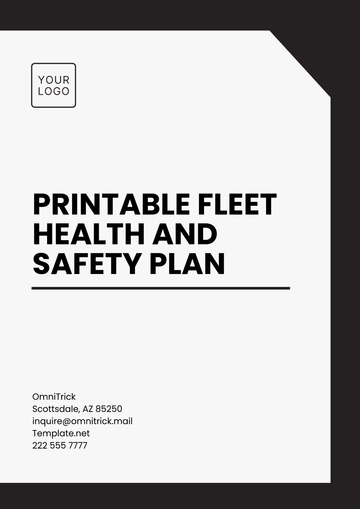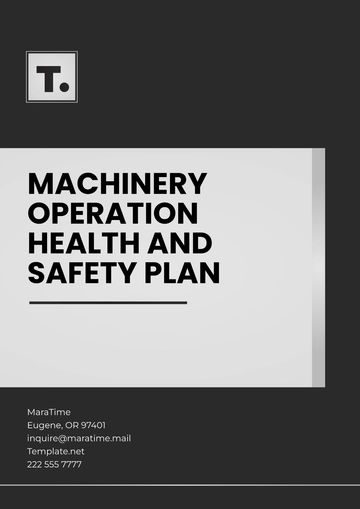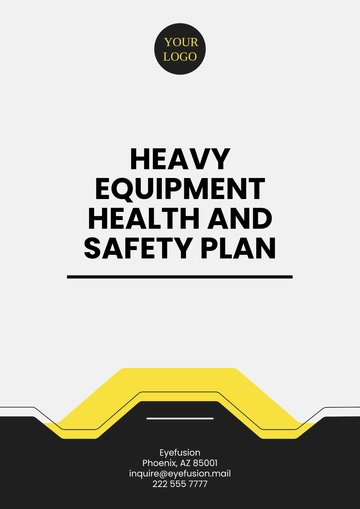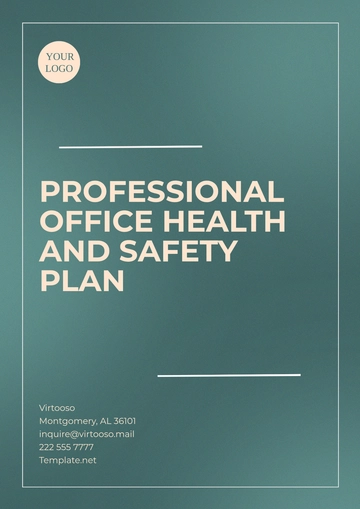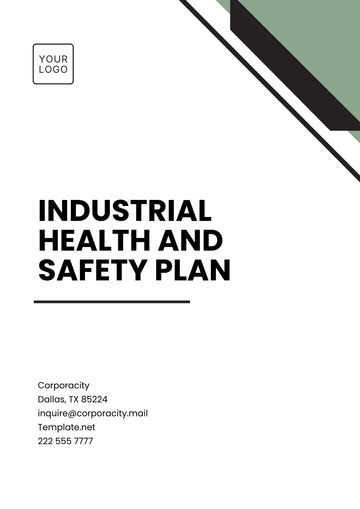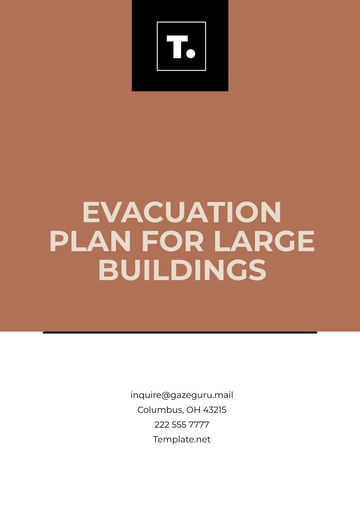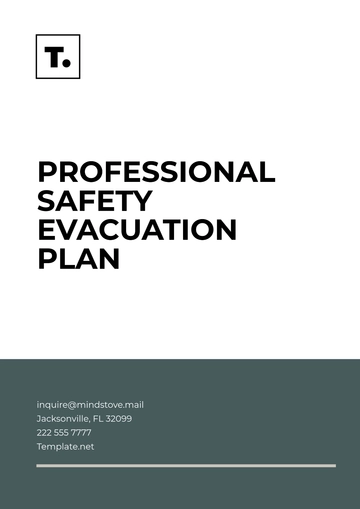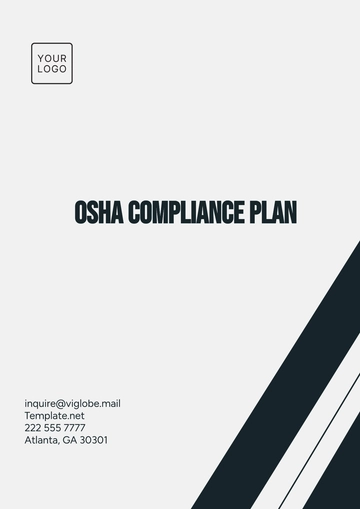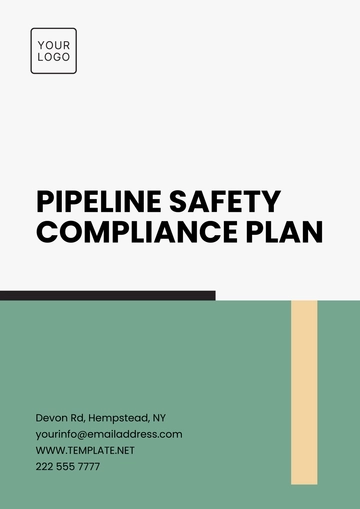Free Cleaning Services Health & Safety Plan
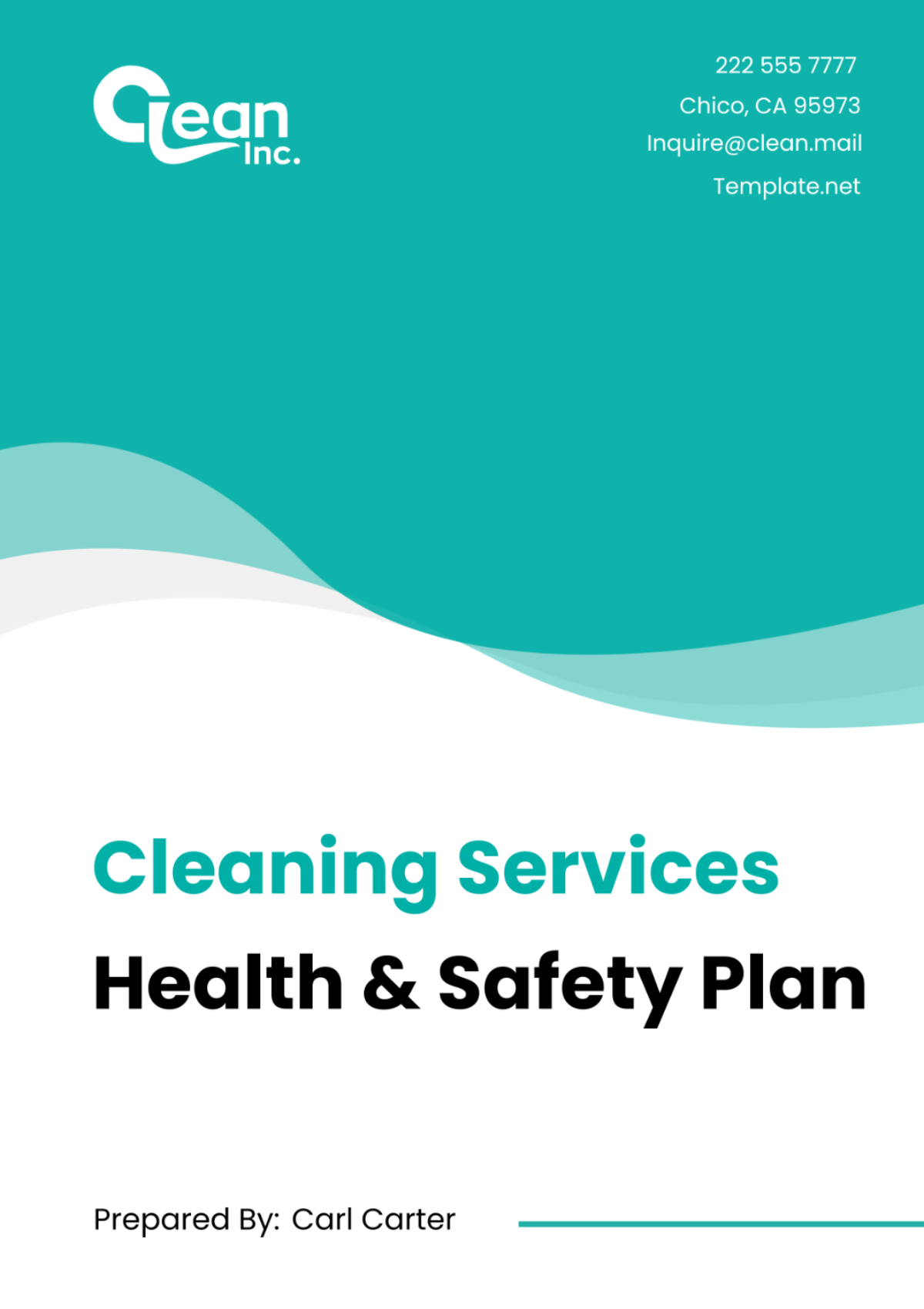
I. Introduction
At [Your Company Name], we prioritize the health and safety of our employees, clients, and the public. Our Cleaning Services Health & Safety Plan outlines our commitment to maintaining high standards of safety in all aspects of our operations. By adhering to this plan, we aim to minimize risks, prevent accidents, and promote a culture of safety throughout our organization.
II. Risk Assessment
We recognize the importance of conducting comprehensive risk assessments to identify potential hazards and risks associated with our cleaning tasks. Our risk assessment process involves the following steps:
Initial Assessment: Before undertaking any cleaning job, our team conducts an initial assessment of the premises to identify potential hazards and risks. This includes evaluating the layout of the space, the types of surfaces to be cleaned, and any existing safety concerns.
Task Analysis: We break down the cleaning tasks into individual components and analyze each step to identify potential hazards. This includes considering factors such as the use of cleaning chemicals, equipment operation, and ergonomic risks associated with repetitive tasks.
Chemical Hazards: We assess the risks associated with the use of cleaning chemicals, including potential exposure to harmful substances, chemical reactions, and improper handling or storage practices. Material Safety Data Sheets (MSDS) are reviewed for each chemical to understand its properties and hazards.
Physical Hazards: We identify physical hazards such as slippery floors, uneven surfaces, or obstacles that may pose risks to our employees or clients. We assess the condition of the workspace and implement measures to mitigate these hazards, such as signage, barricades, or floor mats.
Ergonomic Risks: We evaluate ergonomic risks associated with cleaning tasks, such as repetitive motions, heavy lifting, or awkward postures. This includes assessing the design of equipment and tools used by our employees to ensure they are ergonomic and user-friendly.
Environmental Factors: We consider environmental factors that may impact the safety of our employees, such as temperature extremes, ventilation, and lighting conditions. We take measures to address these factors to ensure a safe working environment.
Client-Specific Risks: We take into account any client-specific risks or concerns that may exist within the premises. This includes factors such as sensitive equipment, fragile materials, or areas with restricted access.
III. Training and Education
Our goal is to equip our team members with the knowledge, skills, and resources they need to perform their cleaning duties safely and effectively. Our training and education initiatives encompass the following components:
Onboarding Training: All new employees undergo thorough onboarding training that covers essential topics such as company policies, safety procedures, and job-specific tasks. This training ensures that new hires are equipped with the foundational knowledge needed to perform their roles safely.
Safety Protocols: We provide detailed training on safety protocols and procedures relevant to the cleaning industry. This includes instruction on proper lifting techniques, safe chemical handling, equipment operation, and emergency response procedures.
Chemical Safety: Our employees receive specialized training on the safe handling, storage, and use of cleaning chemicals. This training includes understanding the potential hazards associated with different chemicals, proper dilution ratios, and the use of personal protective equipment (PPE) when working with hazardous substances.
Equipment Training: We offer comprehensive training on the proper use and maintenance of cleaning equipment and tools. This includes instruction on how to safely operate machinery such as vacuum cleaners, floor scrubbers, and pressure washers, as well as how to troubleshoot common issues.
Personal Protective Equipment (PPE): Employees are trained on the importance of using appropriate PPE to protect themselves from potential hazards. This includes instruction on the selection, fitting, and maintenance of PPE such as gloves, goggles, masks, and respirators.
Task-Specific Training: Depending on the nature of their assigned tasks, employees receive task-specific training to address unique safety considerations. This may include training on specialized cleaning techniques for sensitive surfaces, biohazard cleanup procedures, or working at heights.
Continuing Education: Our commitment to safety extends beyond initial training. We provide ongoing education and professional development opportunities to keep our team members up-to-date on the latest safety regulations, industry best practices, and emerging technologies in the cleaning industry.
Evaluation and Feedback: We regularly evaluate the effectiveness of our training programs through assessments, surveys, and feedback from employees. This allows us to identify areas for improvement and make adjustments to our training initiatives as needed.
IV. Personal Protective Equipment (PPE)
We are committed to continually evaluating and improving our PPE practices to ensure the highest level of protection for our workforce. Our comprehensive approach to PPE includes the following elements:
Assessment of PPE Needs: Before commencing any cleaning task, our team conducts an assessment to determine the specific PPE requirements based on the nature of the job, potential hazards present, and relevant regulations. This ensures that employees have the appropriate protection for their assigned tasks.
Selection of PPE: We carefully select PPE that is suitable for the hazards encountered in our cleaning operations. This may include gloves, goggles, face shields, masks, respirators, protective clothing, and footwear. PPE selection is based on factors such as chemical compatibility, durability, and comfort.
Training on PPE Usage: Employees undergo thorough training on the proper usage of PPE, including when and how to use each type of protective equipment, as well as any limitations or restrictions. This training covers topics such as donning and doffing procedures, storage requirements, and maintenance of PPE.
Chemical Resistance: For tasks involving exposure to cleaning chemicals, we ensure that PPE selected provides adequate protection against chemical splashes, spills, or exposure. Chemical-resistant gloves, goggles with indirect ventilation, and chemical-resistant aprons are examples of PPE used to mitigate chemical hazards.
Respiratory Protection: When cleaning tasks involve airborne contaminants such as dust, mold, or chemical fumes, respiratory protection is essential. Employees are provided with appropriate respiratory protection, such as N95 respirators or powered air-purifying respirators (PAPRs), and receive training on their proper use and maintenance.
Regular Inspection and Maintenance: We conduct regular inspections of PPE to ensure that it remains in good condition and is functioning properly. Damaged or worn-out PPE is promptly replaced to maintain the highest levels of protection for our employees.
Accessibility and Availability: PPE is readily accessible to all employees at our job sites. We maintain sufficient stock of PPE to ensure that employees have access to replacement equipment as needed. Additionally, we provide clear signage and instructions regarding the location and use of PPE.
V. Chemical Safety
Chemical safety is a paramount concern at [Your Company Name], and we are dedicated to ensuring the safe handling, storage, and use of cleaning chemicals in our operations. Our comprehensive approach to chemical safety encompasses the following key elements:
Chemical Inventory and Risk Assessment: We maintain a detailed inventory of all cleaning chemicals used in our operations and conduct regular risk assessments to identify potential hazards associated with each product. This includes evaluating factors such as toxicity, flammability, reactivity, and environmental impact.
Safe Handling Procedures: Employees receive thorough training on the proper handling of cleaning chemicals, including techniques for safe mixing, dilution, and application. This training emphasizes the importance of wearing appropriate personal protective equipment (PPE), avoiding contact with skin and eyes, and following manufacturer's instructions and safety data sheets.
Storage and Labeling: Cleaning chemicals are stored in designated areas that are secure, well-ventilated, and away from incompatible materials. Containers are properly labeled with the name of the chemical, hazard warnings, and handling instructions to ensure clear identification and safe handling.
Chemical Compatibility: We educate our employees on the importance of understanding chemical compatibility to prevent hazardous reactions. Mixing of incompatible chemicals is strictly prohibited, and employees are trained to consult safety data sheets and seek guidance from supervisors if uncertain.
Spill Response and Containment: In the event of a chemical spill or release, employees are trained on proper spill response procedures to minimize exposure and environmental impact. This includes promptly containing the spill, using appropriate absorbent materials, and notifying supervisors or emergency responders as necessary.
Ventilation and Engineering Controls: We ensure adequate ventilation in areas where cleaning chemicals are used to minimize exposure to airborne contaminants. Additionally, engineering controls such as fume hoods or local exhaust systems may be employed to further reduce exposure risks.
Waste Management and Disposal: Proper disposal of cleaning chemical waste is essential to prevent environmental contamination and regulatory violations. We adhere to all applicable regulations and guidelines for the disposal of hazardous waste, including segregation, labeling, and proper storage prior to disposal.
VI. Equipment Safety
We prioritize the safety of our employees and clients by ensuring that all cleaning equipment is properly maintained, inspected, and operated safely. Our commitment to equipment safety encompasses the following comprehensive measures:
Equipment Inspection and Maintenance: We conduct regular inspections of all cleaning equipment to identify any signs of wear, damage, or malfunction. This includes checking for loose or missing parts, damaged cords or hoses, and signs of deterioration. Any issues identified during inspections are promptly addressed through repairs or replacements to ensure that equipment remains in safe working condition.
Scheduled Maintenance Program: We implement a scheduled maintenance program to proactively address the maintenance needs of our cleaning equipment. This program includes routine servicing, lubrication, and calibration of equipment to prevent breakdowns and prolong equipment lifespan. Maintenance tasks are documented, and records are kept to track equipment history and compliance with maintenance schedules.
Operator Training: All employees undergo comprehensive training on the proper operation of cleaning equipment before being assigned to use them. Training includes instruction on equipment controls, safety features, and proper usage techniques to minimize the risk of accidents or injuries. Employees are also trained in troubleshooting common equipment issues and how to respond in the event of an emergency.
Safe Use Guidelines: We provide clear guidelines and procedures for the safe use of cleaning equipment, including recommendations for appropriate settings, usage limitations, and safety precautions. This includes ensuring that equipment is used only for its intended purposes and in accordance with manufacturer's instructions.
Ergonomic Design Considerations: We prioritize the selection of cleaning equipment with ergonomic design features to minimize the risk of musculoskeletal injuries and fatigue among our employees. This includes equipment with adjustable handles, padded grips, and lightweight construction to enhance comfort and reduce strain during use.
Equipment Labels and Signage: Equipment is labeled with clear and prominent safety warnings, operating instructions, and hazard symbols to ensure that operators are aware of potential risks and how to mitigate them. Additionally, signage is used to designate safe operating zones, restricted areas, and emergency shut-off locations.
VII. Emergency Procedures
In the event of an emergency situation, [Your Company Name] has established clear protocols to ensure the safety and well-being of our employees, clients, and the public. Our emergency procedures include:
Evacuation Procedures: Employees are trained to evacuate the premises calmly and swiftly in the event of a fire, gas leak, or other immediate danger. Evacuation routes and assembly points are clearly marked, and employees are familiarized with their locations during training sessions.
Emergency Contacts: Contact information for local emergency services, including fire, police, and medical services, is readily accessible to all employees. In addition, designated individuals within the organization are responsible for contacting emergency services and coordinating response efforts.
Emergency Response Team: We have designated individuals who are trained to serve as members of the emergency response team. These individuals are responsible for coordinating evacuation procedures, providing first aid assistance, and communicating with emergency services as needed.
First Aid and Medical Assistance: Employees receive training in basic first aid techniques and are equipped with first aid kits at each job site. In the event of an injury or medical emergency, trained personnel are available to administer first aid and coordinate medical assistance.
Fire Safety Procedures: Employees are trained in fire safety procedures, including the proper use of fire extinguishers and evacuation techniques in the event of a fire. Fire drills are conducted regularly to ensure that employees are prepared to respond effectively in the event of a fire emergency.
Chemical Spill Response: In the event of a chemical spill or release, employees are trained to contain the spill, minimize exposure, and notify supervisors immediately. Hazardous materials spill kits containing absorbent materials, PPE, and spill response instructions are available for use.
Utility Shutdown Procedures: Employees are trained in utility shutdown procedures to mitigate hazards such as gas leaks, water leaks, or electrical emergencies. Instructions for shutting off utilities are posted in accessible locations, and employees are trained to follow these procedures safely.
Communication Protocols: Clear communication protocols are established to ensure that employees are informed of emergency situations promptly. This includes the use of alarms, intercom systems, and verbal instructions to alert employees to evacuate or take appropriate actions.
Post-Emergency Procedures: Following an emergency situation, employees are briefed on post-emergency procedures, including reporting to designated assembly points for accountability, providing assistance to emergency responders, and documenting any injuries or damages incurred.
VIII. Health and Hygiene
At [Your Company Name], we prioritize the health and hygiene of our employees to maintain a safe and sanitary working environment. Our comprehensive approach to health and hygiene includes the following measures:
Hand Hygiene: Employees are required to practice good hand hygiene by washing their hands frequently with soap and water for at least 20 seconds, especially before and after handling cleaning equipment or chemicals, eating, or using the restroom.
Hand Sanitization: Hand sanitizers with at least 60% alcohol content are provided at job sites for use when handwashing facilities are not readily available. Employees are encouraged to use hand sanitizer regularly to supplement handwashing and reduce the spread of germs.
Respiratory Hygiene: Employees are educated on the importance of respiratory hygiene, including covering their mouth and nose with a tissue or their elbow when coughing or sneezing to prevent the spread of respiratory droplets.
Personal Hygiene: Employees are expected to maintain good personal hygiene practices, including wearing clean uniforms or work attire, keeping hair tied back and away from the face, and refraining from smoking or chewing gum while on duty.
Illness Reporting: Employees are required to report any symptoms of illness, including fever, cough, sore throat, or respiratory symptoms, to their supervisors immediately. Sick employees are encouraged to stay home to prevent the spread of illness to coworkers and clients.
Cleaning and Sanitization Practices: We implement rigorous cleaning and sanitization practices to maintain a hygienic work environment. High-touch surfaces, such as doorknobs, light switches, and shared equipment, are cleaned and disinfected regularly using EPA-approved disinfectants.
Personal Protective Equipment (PPE): Employees are provided with appropriate PPE, such as gloves and masks, to protect against exposure to infectious agents and other hazards. PPE is worn as required during cleaning tasks and disposed of properly after use.
Food Safety: Employees are trained in food safety practices if they are responsible for cleaning in areas where food is prepared or served. This includes proper handling of food contact surfaces, avoiding cross-contamination, and following established food safety protocols.
Hydration and Nutrition: We encourage employees to stay hydrated and nourished throughout their shifts by providing access to clean drinking water and meal breaks as needed. Healthy snacks and meals are encouraged to support overall well-being and energy levels.
Wellness Programs: We offer wellness programs and resources to support the physical and mental health of our employees. This may include access to employee assistance programs, wellness workshops, and resources for stress management and work-life balance.
IX. Client Communication
Effective communication with our clients is essential to ensure transparency, address concerns, and maintain a positive working relationship. At [Your Company Name], we prioritize clear and open communication with our clients through the following measures:
Initial Consultation: Before commencing any cleaning services, we conduct an initial consultation with our clients to understand their specific needs, preferences, and expectations. This allows us to tailor our services to meet their unique requirements and establish clear lines of communication from the outset.
Service Agreements: We provide clients with detailed service agreements outlining the scope of work, frequency of service, pricing, and any additional terms and conditions. This ensures that both parties have a clear understanding of the agreed-upon services and expectations.
Regular Updates: We maintain regular communication with our clients to provide updates on the progress of cleaning projects, address any concerns or issues that may arise, and solicit feedback on our performance. This may include phone calls, emails, or in-person meetings as needed.
Emergency Contact Information: We provide clients with emergency contact information to reach our team outside of regular business hours in the event of urgent issues or emergencies. This ensures that clients have access to support and assistance whenever it is needed.
Resolution of Concerns: If a client expresses dissatisfaction or raises concerns about our services, we respond promptly and professionally to address their issues and find satisfactory resolutions. We view client feedback as an opportunity for improvement and are committed to resolving any issues in a timely manner.
X. Compliance
At [Your Company Name], we are committed to ensuring compliance with all relevant health and safety regulations, standards, and guidelines. This includes but is not limited to:
Occupational Safety and Health Administration (OSHA) standards in the United States
Health and Safety Executive (HSE) regulations in the United Kingdom
Workplace Health and Safety regulations in Australia
Any other local, state, or national regulations applicable to our operations
We regularly monitor changes in regulations and standards to ensure that our Health & Safety Plan remains up to date and in alignment with current requirements. Our management team is responsible for overseeing compliance efforts and implementing any necessary changes to maintain adherence to regulatory requirements.
XI. Conclusion
Our commitment to excellence in cleaning services is matched only by our dedication to prioritizing the health, safety, and satisfaction of our clients and employees. Through comprehensive health and safety protocols, effective communication channels, and ongoing training initiatives, we strive to deliver the highest standards of cleanliness while maintaining a safe and supportive work environment. By fostering a culture of continuous improvement and accountability, we remain steadfast in our mission to exceed expectations, build lasting partnerships, and uphold our reputation as a trusted leader in the cleaning industry.
- 100% Customizable, free editor
- Access 1 Million+ Templates, photo’s & graphics
- Download or share as a template
- Click and replace photos, graphics, text, backgrounds
- Resize, crop, AI write & more
- Access advanced editor
Safeguard your cleaning services team with Template.net's Health & Safety Plan Template. Easily editable in our AI Editor Tool, this customizable template offers a comprehensive framework for prioritizing employee well-being. From risk assessments to emergency protocols, ensure compliance and mitigate hazards effectively. Elevate your safety standards and foster a secure work environment with Template.net!
You may also like
- Finance Plan
- Construction Plan
- Sales Plan
- Development Plan
- Career Plan
- Budget Plan
- HR Plan
- Education Plan
- Transition Plan
- Work Plan
- Training Plan
- Communication Plan
- Operation Plan
- Health And Safety Plan
- Strategy Plan
- Professional Development Plan
- Advertising Plan
- Risk Management Plan
- Restaurant Plan
- School Plan
- Nursing Home Patient Care Plan
- Nursing Care Plan
- Plan Event
- Startup Plan
- Social Media Plan
- Staffing Plan
- Annual Plan
- Content Plan
- Payment Plan
- Implementation Plan
- Hotel Plan
- Workout Plan
- Accounting Plan
- Campaign Plan
- Essay Plan
- 30 60 90 Day Plan
- Research Plan
- Recruitment Plan
- 90 Day Plan
- Quarterly Plan
- Emergency Plan
- 5 Year Plan
- Gym Plan
- Personal Plan
- IT and Software Plan
- Treatment Plan
- Real Estate Plan
- Law Firm Plan
- Healthcare Plan
- Improvement Plan
- Media Plan
- 5 Year Business Plan
- Learning Plan
- Marketing Campaign Plan
- Travel Agency Plan
- Cleaning Services Plan
- Interior Design Plan
- Performance Plan
- PR Plan
- Birth Plan
- Life Plan
- SEO Plan
- Disaster Recovery Plan
- Continuity Plan
- Launch Plan
- Legal Plan
- Behavior Plan
- Performance Improvement Plan
- Salon Plan
- Security Plan
- Security Management Plan
- Employee Development Plan
- Quality Plan
- Service Improvement Plan
- Growth Plan
- Incident Response Plan
- Basketball Plan
- Emergency Action Plan
- Product Launch Plan
- Spa Plan
- Employee Training Plan
- Data Analysis Plan
- Employee Action Plan
- Territory Plan
- Audit Plan
- Classroom Plan
- Activity Plan
- Parenting Plan
- Care Plan
- Project Execution Plan
- Exercise Plan
- Internship Plan
- Software Development Plan
- Continuous Improvement Plan
- Leave Plan
- 90 Day Sales Plan
- Advertising Agency Plan
- Employee Transition Plan
- Smart Action Plan
- Workplace Safety Plan
- Behavior Change Plan
- Contingency Plan
- Continuity of Operations Plan
- Health Plan
- Quality Control Plan
- Self Plan
- Sports Development Plan
- Change Management Plan
- Ecommerce Plan
- Personal Financial Plan
- Process Improvement Plan
- 30-60-90 Day Sales Plan
- Crisis Management Plan
- Engagement Plan
- Execution Plan
- Pandemic Plan
- Quality Assurance Plan
- Service Continuity Plan
- Agile Project Plan
- Fundraising Plan
- Job Transition Plan
- Asset Maintenance Plan
- Maintenance Plan
- Software Test Plan
- Staff Training and Development Plan
- 3 Year Plan
- Brand Activation Plan
- Release Plan
- Resource Plan
- Risk Mitigation Plan
- Teacher Plan
- 30 60 90 Day Plan for New Manager
- Food Safety Plan
- Food Truck Plan
- Hiring Plan
- Quality Management Plan
- Wellness Plan
- Behavior Intervention Plan
- Bonus Plan
- Investment Plan
- Maternity Leave Plan
- Pandemic Response Plan
- Succession Planning
- Coaching Plan
- Configuration Management Plan
- Remote Work Plan
- Self Care Plan
- Teaching Plan
- 100-Day Plan
- HACCP Plan
- Student Plan
- Sustainability Plan
- 30 60 90 Day Plan for Interview
- Access Plan
- Site Specific Safety Plan
